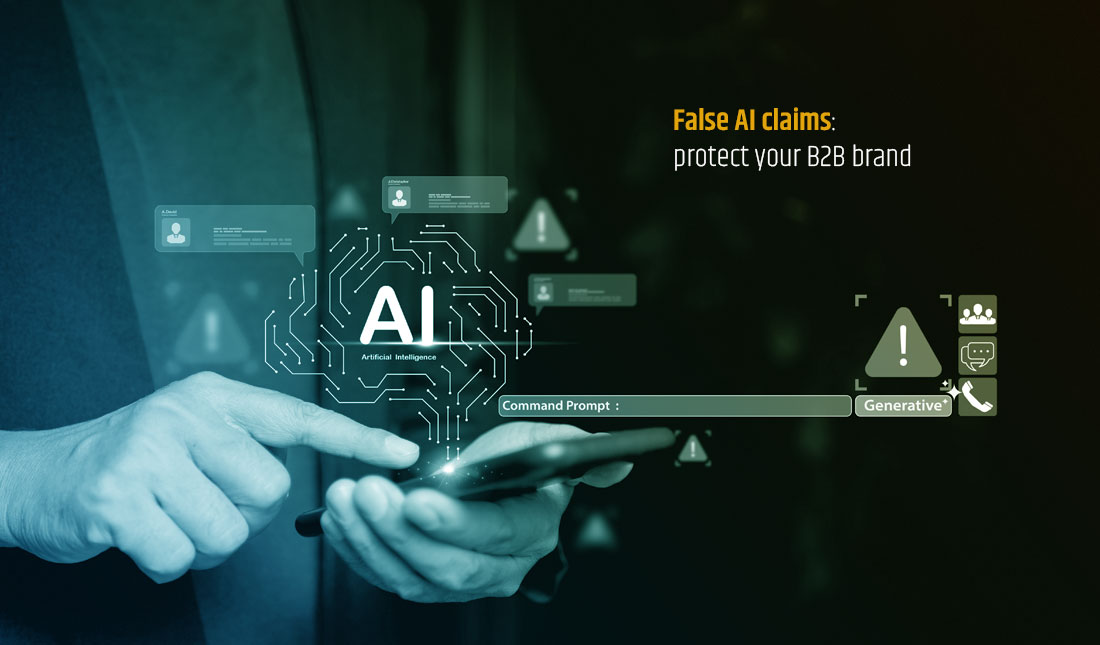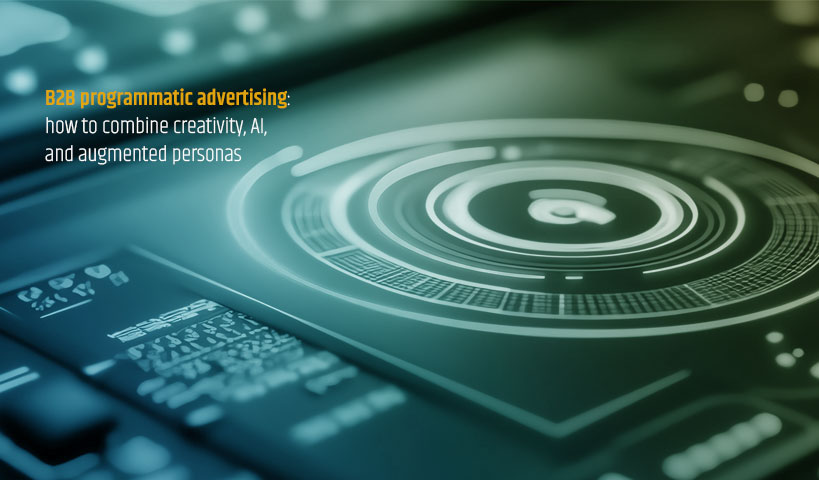
Just a few years ago, B2B online search was like a well-organized catalog: you entered a keyword and Google presented the options. Today, that catalog no longer exists. Instead, artificial intelligence synthesizes, reformulates, and chooses for you. And if you want your customers to still find you, you have to learn to talk to them… and to talk to these new intelligences.
In this new world, the challenge is not only to be found, but to be chosen. And to achieve this, you need to know how to capture attention in a matter of seconds and understand the intentions of potential customers. This is exactly the thread we want to explore with you today, connecting different ideas that we have shared in other posts.
From agentic AI to synthetic populations, from GEO to voice search, from attention marketing to intent marketing, everything converges on one reality: B2B online search is entering an era where relevance and mental availability make all the difference.
The evolution of B2B online search
We still remember the days when everything revolved around SEO. The game was all about choosing the right keywords, optimizing tags, and building links. Those who mastered these techniques had a good chance of appearing at the top of the results page. It was reassuring, almost mechanical. But those days are gone.
Today, generative engines are completely changing the game. They no longer just rank, they interpret and rephrase. They are no longer showcases displaying options, but filters that select and summarize for the user. This is a major shift.
This is what drives us to talk about GEO, or Generative Engine Optimization. Optimizing for these engines is no longer just about appealing to a ranking algorithm, but about convincing artificial intelligence to include your content in its responses. This is not a subtle difference, but a radical change. With GEO, your content is no longer aimed solely at humans. It must also persuade AI models that you deserve to be cited.
And if we take this logic further, we enter the realm of language model optimization (LMO). Here, the challenge is to ensure that your content is understood and used by the AI itself. If you publish clear, credible, and well-structured content, it becomes part of the collective memory of these models. In other words, they make you visible in the ecosystem of generated responses
Agentic AI and the transformation of B2B online search behavior
Let’s imagine for a moment the daily life of a B2B decision-maker. Pressed by his responsibilities, he no longer has time to browse through ten pages of Google results. He delegates his search to an intelligent agent. This agent consults, compares, filters, and then returns with a reduced and reasoned selection. At this point, 90% of the work is already done.
That’s what agentic AI is all about. For us, it’s a silent revolution. Because in many cases, our content is no longer read directly by a human. It first passes through the eyes of a machine. But a machine doesn’t read between the lines. It needs clarity, solid evidence, and a logical structure.
This may seem worrying, but we see it above all as an opportunity. Because if your content knows how to speak to agents, you’ve already earned a place in the short summary that will be given to the decision-maker. In this world, attention is won before it even reaches humans.
Synthetic populations: an accelerated laboratory
We have always worked with market research, surveys, and focus groups. These are valuable tools, but they require time and resources. The arrival of synthetic populations is changing the game.
Thanks to them, we can simulate behaviors and test messages almost instantly. We can imagine a population of IT directors in Quebec and observe how they would react to a new offer. We can compare several scenarios and quickly adjust our assumptions.
These populations do not completely replace traditional methods, but they offer us unprecedented speed and accuracy. They allow us to better understand how attention is distributed and how intention manifests itself, even before launching a real campaign.
Voice and conversational B2B online search
We are convinced that voice is playing an increasingly important role in B2B. It is no longer just a tool for the general public. Managers on the go, technicians in the field, salespeople who want quick answers… they are all already using voice search.
What’s changing with voice is the way questions are asked. Gone are the days of stringing together keywords. Now it’s all about long, natural phrases. We no longer say “SQL Server Azure migration Quebec,” but rather, “Who is the best partner in Quebec to migrate my SQL Server to Azure without service interruption?” “
This forces us to write content that speaks the way you and your customers speak. And it brings voice search closer to intent marketing. Because a voice query is often a sign of an immediate need, a decision in the making.
Attention marketing: six seconds to make an impression
We see it every day: attention spans have become microscopic. In B2B, decision-makers rarely give you more than a few seconds to decide whether your content is worth reading. Six seconds, no more.
It’s brutal, but it’s the reality. And in the age of AI, it’s even more true. Intelligent agents scan in a fraction of a second. If a signal of relevance does not appear immediately, your content is ignored.
This reminds us how vital it is to get straight to the point. To be clear, to quickly assert the value we bring. In this context, attention marketing is not an option, but a condition for survival.
Intent marketing: beyond visibility
But attracting attention isn’t enough. The next step is to understand intent. Is the person simply looking for information? Are they comparing options? Are they ready to buy?
Intent marketing is the ability to read between the lines. A specific B2B online search, a download, participation in a virtual event… these are all signals that reveal a project in the making.
And this is where everything comes together. GEO, voice, agentic AI, synthetic populations: all these approaches serve the same purpose, which is to detect and interpret intent. Attention opens a door for you, but intention guides you toward conversion.
Mental availability: the real common thread
Ultimately, what we seek to build with our clients is mental availability. It’s not enough to be visible; you have to be present in the mind of the decision-maker when they make a decision.
This is where attention and intention meet. Attention makes you noticeable, intention makes you indispensable. And in a world where artificial intelligence filters and selects, this mental availability is more valuable than ever.
We believe that the future of B2B marketing rests on this dual ability: capturing fleeting attention and understanding deep intention. Companies that can combine the two, addressing both humans and machines, will gain a decisive advantage.
Conclusion on B2B online search
B2B online search has changed in nature. It is no longer linear, but circular and conversational. This search is filtered by artificial intelligence and enriched by synthetic data. It requires a new agility, an ability to think simultaneously for humans and machines.
The real challenge is not just to be found. It is to be chosen. And to achieve this, you have to be clear, relevant, and mentally available.
At ExoB2B, we support companies in this transformation every day. We help them integrate GEO, prepare their content for voice search, and build attention and intent strategies. We work with them to ensure that their content is understood by AI and remembered by decision-makers. Are you ready to enter this new era of B2B search? Contact us.
Frequently asked questions (FAQ)
What is B2B online search in the age of AI?
It is a search where generative AI, conversational engines, and intelligent agents play a central role. They no longer just list results: they interpret, filter, and suggest.
How does GEO differ from SEO?
SEO aims to please Google. GEO aims to please generative engines. The goal is no longer to appear in a ranking, but to be included in a response formulated by AI.
Why is attention marketing crucial in B2B?
Because you only have a few seconds to convince. Without immediate impact, your message will be ignored, whether by a human or by AI.
How can you identify a potential customer’s intention?
By observing their behavior: their searches, interactions, downloads. Every action is a signal that you must learn to interpret.
Are synthetic populations replacing traditional studies?
No, they complement them. They allow you to quickly test scenarios and better understand potential reactions without waiting weeks.
How can you prepare your content for voice search?
By using natural language, structuring your texts in the form of direct answers, and thinking about the questions your customers would ask out loud.




